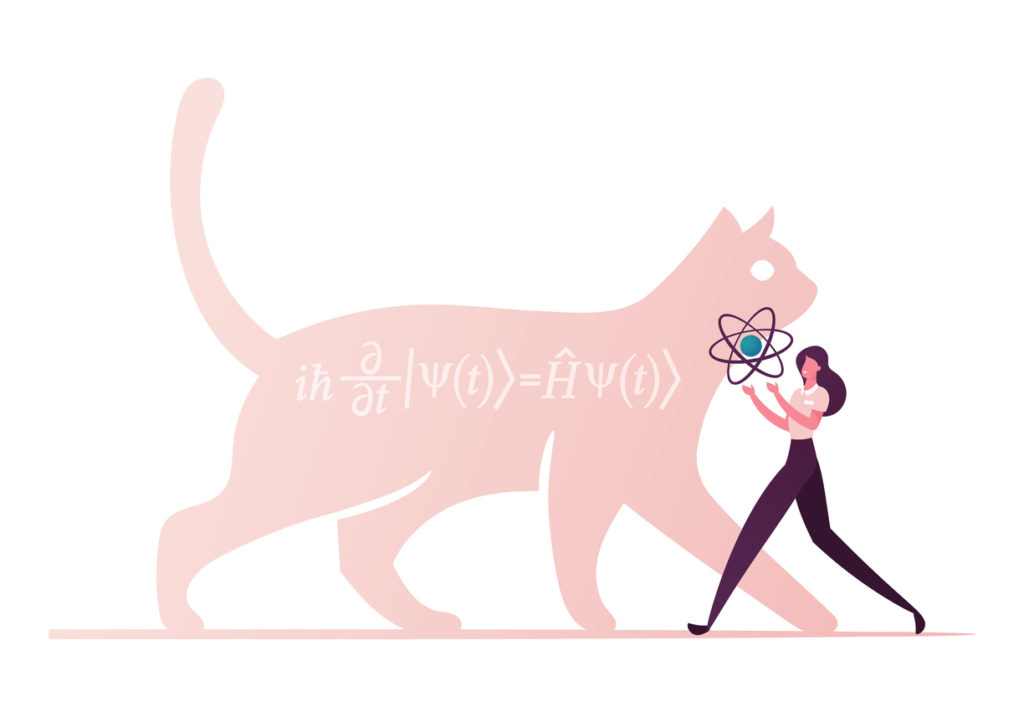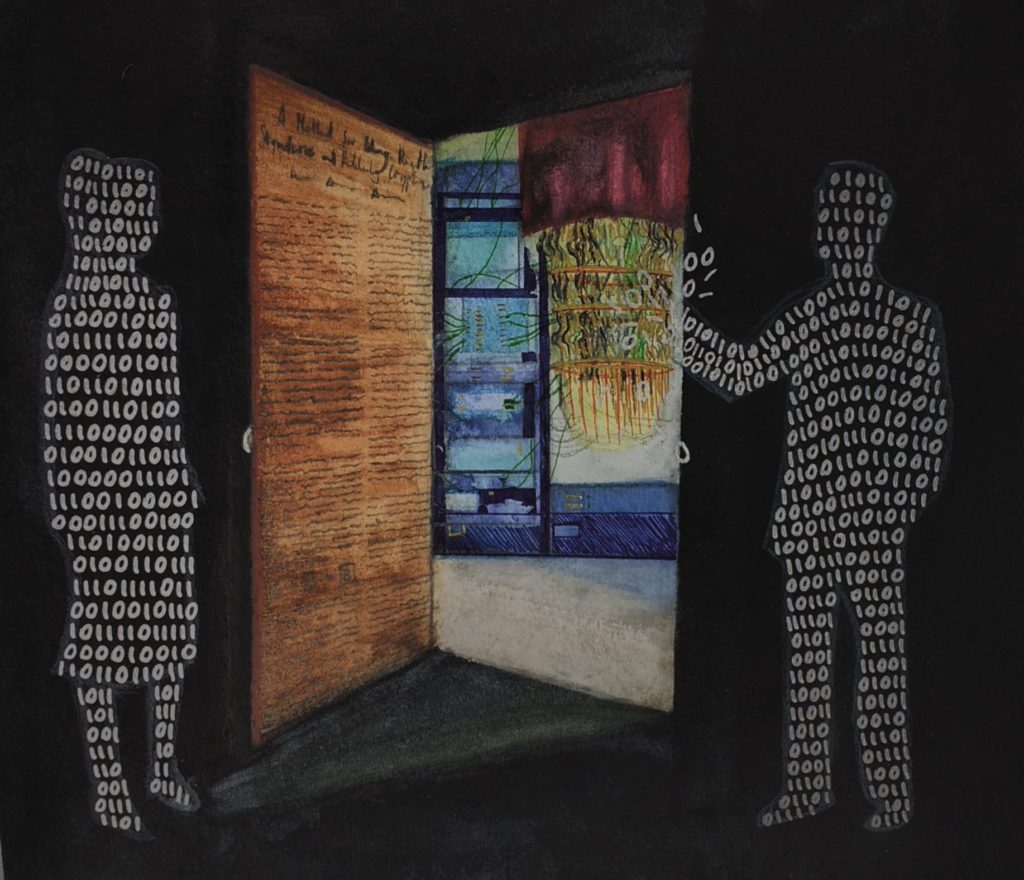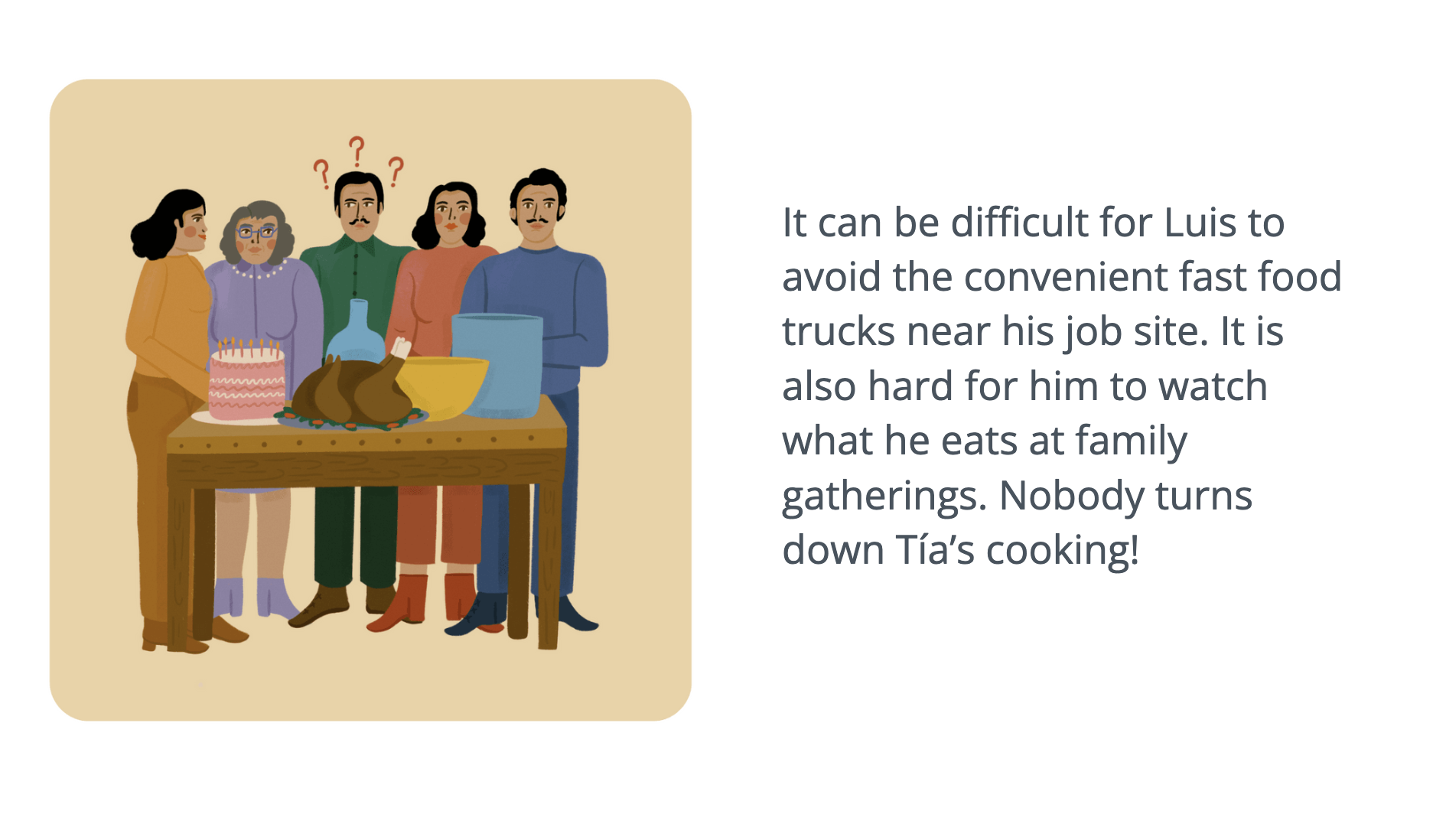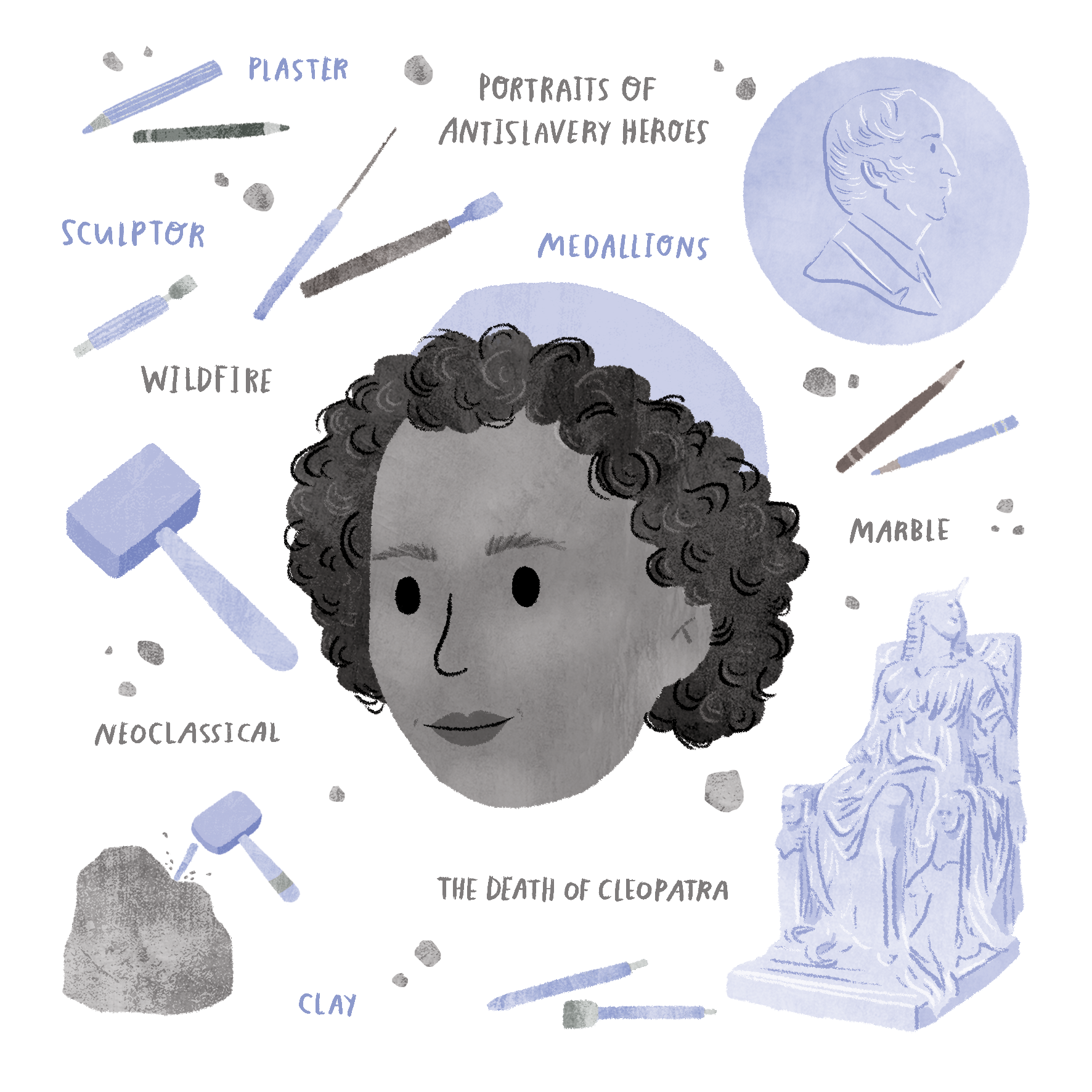For Lifeology’s July Science Poetry Challenge, Maria Violaris submitted a delightful and thought-provoking poem about Alice and Bob, fictional characters commonly used as placeholder names in cryptology, science and engineering literature where they are participants in thought experiments, to aid in comprehension. Maria Violaris’ friend Maria Kostylew also created an artwork response to the poem, that helps us see that Alice and Bob aren’t necessarily humans, but rather are often used to represent computers or computer programs, composed of 1’s and 0’s.
We’ve selected Violaris’ and Kostylew’s work as our winning Science Communication Challenge entry for July! Enjoy!

by Maria Violaris
Thought experiments have always fascinated me because they allow us to make true, novel scientific advances, without needing any equipment other than our creativity. A thought experiment essentially captures science within a story that makes us think along lines we hadn’t before – Schrodinger imagined poisoning a cat, Einstein imagined sitting on a photon, and countless physicists have imagined the tales of Alice and Bob in all kinds of adventures. Sometimes they seek to understand time by comparing their watches; other times their attempts to phone one another are infiltrated by the notorious eavesdropper Eve, whose sinister motivations have so many variations that she deserves a poem in her own right. With a particular prominence in cryptography and quantum information, Alice and Bob give us an approachable testing ground for complex technical concepts.
Alice and Bob are the gateway of stories into science. They give us a physical grasp on the elusive world of thought experiments – so poignant that these fictional characters have broken through the constraints of formal scientific writing, appearing in countless papers ranging from quantum physics to game theory. The intricate science they enable us to express juxtaposes how they and all their experiments are entirely the product of our imaginations.
I wondered, how would Alice and Bob feel about their pivotal role in uncovering the mysteries of science? They are more widely published than many prolific scientists, and seamlessly integrate compelling storytelling with technical concepts. My poem is itself a thought experiment: What does science look like from the perspective of Alice and Bob, who are capable of perfectly implementing every imaginable experiment, bar those in the real world? What does the resounding success of these detectives that don’t exist tell us about the role of stories in science? Perhaps these abstract characters are not just our tools for science communication, but are becoming our teachers.

Artwork response by Maria Kostylew
Alice and Bob: The Detectives that Don’t Exist
“Not again!” cries Alice, as machines start to whir.
Bob closes the heavy lab doors unperturbed.
Another day, new mystery, for A and B to trial,
“We’re progressing science,” says Bob with a smile.
“But Bob – we don’t exist, just words on a page.
Placeholders when scientists can’t think of a name.”
“But Alice – we bring to life the mysteries most vague,
With a body, a story, a play on a stage.”
“Exactly, a play, a toy, a rhyme!
Testing fantasies of secret codes or quantum time.”
“Our experiments are models, and even so,
The fantasies today make technology tomorrow.”
“Am I simply A character, A with lice deleted,
A tool like A test-tube that’s cleaned and repeated?”
“Alice, you’re a character of dimensions all kind,
In paper after paper and mind after mind.”
Alice gathers her coins, her phone, her watch.
Things were so simple before she met Bob.
But perhaps they are no more real than her,
These so-called science mysteries, great and small,
“Bob – if fact was always fiction once,
Then science is fiction after all!”
About the author: Maria Violaris recently completed her Physics Master’s degree at Oxford and enjoys researching and communicating quantum physics. She founded Oxford Quantum Information Society in 2019, won the FameLab 2020 Oxford Final, and is also an enthusiastic STEM Ambassador, leading events such as quantum coding workshops for secondary school children.
Ab0ut the illustrator: Maria Kostylew is an English Literature and Language undergraduate at the University of Oxford. She has a longstanding interest in both art and science as well as the interconnections between them; she has written academic essays on the overlap between the two disciplines during the 18th and 19th centuries and created illustrations for The Oxford Scientist journal. Literature as a testing ground for our perception of reality shares many aims with science; in her illustration she tries to capture the conceptualising potential of art to explore the poem’s literary-scientific concern with platonism in science.





